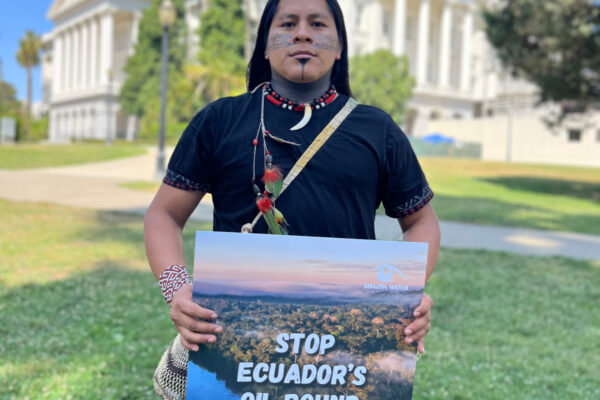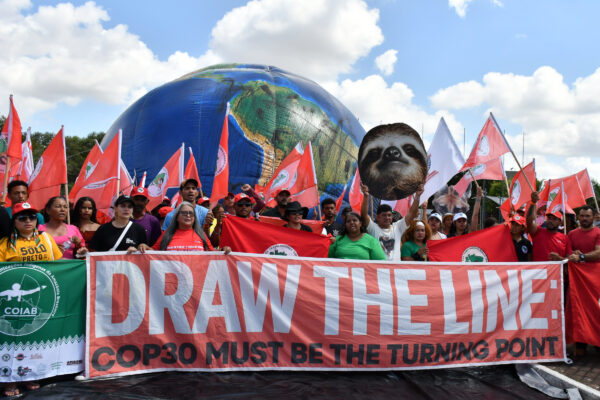
Though Colombia endorsed the UN Declaration on the Rights of Indigenous Peoples in 2009, the government has taken little action that shows “[concern] that indigenous peoples have suffered from historic injustices as a result of, inter alia, their colonization and dispossession of their lands, territories and resources, thus preventing them from exercising, in particular, their right to development in accordance with their own needs and interests.”
Instead, indigenous groups in Colombia continue to face unjust violence, colonization, dispossession of lands, displacement due to armed conflict and climate change, stunted recovery and development due to ethnic discrimination, forced assimilation, and cultural degradation. Yet unlike the conquistadors that threatened indigenous peoples centuries ago, today’s antagonists wear the masks of extractive industries, guerrilla soldiers, paramilitaries, and poorly-functioning government assistance programs.
Violence appears to be omnipresent in Colombia. For several decades guerrilla armies and paramilitaries have engaged in an ever-evolving conflict of arms, each guerrilla attack countered by an even deadlier military attack. And when President Santos took office earlier this year, he made it clear that he would maintain an armed offensive against “drug-running insurgents.”
The Revolutionary Armed Forces of Colombia (FARC) has often targeted the oil industry, including the June 2011 kidnapping of three Chinese oil employees in Colombia’s southern rainforest contesting oil activity on indigenous territory. In March, the FARC announced the unilateral release of military prisoners; however, the rebel group allegedly relapsed when Roméo Langlois disappeared on April 28th, 2012 and a FARC woman announced that the French journalist is a prisoner of war. This year the National Liberation Army (ELN) declared they would continue their offensive against the petroleum infrastructure unless the government took a number of steps to protect the environment and ancestral indigenous territory.
Alternatively, 49 human rights defenders were allegedly murdered by paramilitaries within the last year; many of the victims were indigenous and were not officially affiliated with any particular NGO. Although both sides declare they are fighting in defense of the Colombian people, the resulting violence has displaced approximately three million citizens. Forty-one thousand of that total have been indigenous people, among the country’s total indigenous population of roughly one million. The National Indigenous Organization of Colombia (ONIC) reported that 1,980 indigenous people were murdered between the years 1998 and 2008, yet in 2009 alone, 114 indigenous people were killed and thousands continue to be displaced.
One of the roots of this conflict, and the resulting displacement of indigenous communities, is natural resource “financialization” and exploitation. Despite the FARC’s efforts to allegedly defend the Amazon rainforest from oil extraction, President Santos plans to advance mining and oil activities in the region. Meanwhile, in its own publication, Colombia’s national oil company, Ecopetrol espouses the pretensions of colonizers as it continues to push forward with projects like the Bicentennial Oil Pipeline and the expansion of storage and export capacities: “The will and determination with which our people today undertake exploratory campaigns in the Llanos Orientales, where over 60% of crude oil production in Colombia is extracted, is not very different to that which the early explorers had before the birth of Ecopetrol and that led to discoveries in the legendary Mares Concession between 1916 and 1945.” The pipeline is expected to finish this year and will be the longest in the country upon completion. It will run more than 900 km between the Casanare Department and the port of Coveñas; the project will total at least USD 4.2 billion.
As a result, thirty-four of Colombia’s 102 unique and diverse indigenous peoples are currently at risk of extinction. These communities are losing their languages, traditions, cultural values, and lives. Many of those who are pushed off of their land by oil companies or war struggle to survive in more urban settings and fall prey to human trafficking, drugs, and prostitution. Meanwhile, those who are relocated to less desirable rural land are often displaced a second time due to La Niña’s massive flooding – over 12,000 homes were destroyed and 356,000 more damaged due to heavy rains in 2010-2011.
And although the victims of armed-conflict and climate-change displacement are often one in the same, the government utilizes two separate offices to handle them. This poorly functioning system prevents government assistance programs like Colombia Humanitaria from spending its USD 500 million budget effectively.
Indigenous peoples are at a disproportionately higher risk of physical violence and cultural degradation. Unless the government takes immediate and drastic action to protect them, as it pledged to do by affirming the UN Declaration on the Rights of Indigenous Peoples three years ago, Colombia’s immensely diverse indigenous population will eventually dissipate. Already, at least ten groups have fewer than 100 members.














